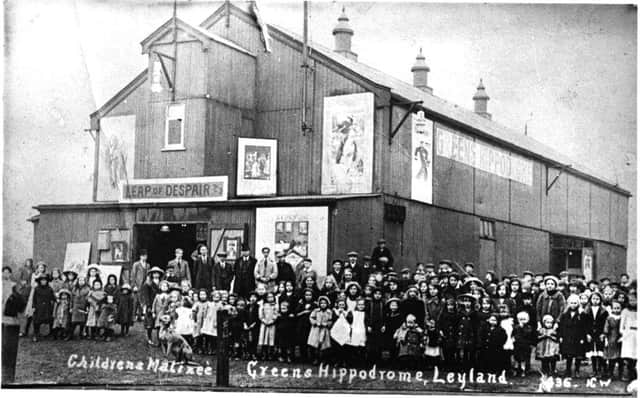Moving pictures of Leyland's first cinema


The picture shows Walter, Robert and Thomas Green, Alf Barker (manager in the hat) and Mr A Walker outside John Green’s Hippodrome in 1936.
Joan Langford describes the buzz of the new cinema in her book: “The first cinema in Farington and Leyland was Green’s Hippodrome, built on what is now Farington and Leyland Club on the corner of Derby Street and Preston Road.
Advertisement
Hide AdAdvertisement
Hide Ad“The cinema was owned by John Green and was thought to be the first purpose built cinema in the North West.
“John was one of the early pioneers of fairground roundabouts.His brother George was also a pioneer of the ‘travelling living pictures’ on the fairground – the first moving pictures to be shown to the public, for entertainment, in this country.
“In 1910, John purchased a 3,000 sq yard piece of land adjacent to Derby Street, Farington, for the purpose of having built his own and the area’s first cinema.
“The 500-seat ‘Hippodrome’ cinema was built in 1910 by Brailsfords – well-known Leyland builders and it was opened before Christmas that year.
Advertisement
Hide AdAdvertisement
Hide Ad“The building was painted red which really much have made it stand out among the other village buildings. It was very popular and was soon affectionately known as ‘T’Hip.
“The corrugated iron projection box was on the outside of the front of the building. The silent films were accompanied on a piano to add appropriate atmosphere.
“It was customary for the manager to wear a top hat when on duty and at the beginning of the performance he announced the film which was to be screened. Alf Barker was the first manager, followed by John’s son Walter Green.
“Early films included Leap of Despair, Charlie Chaplin’s Charlie at the Races and Hound of the Baskervilles.”